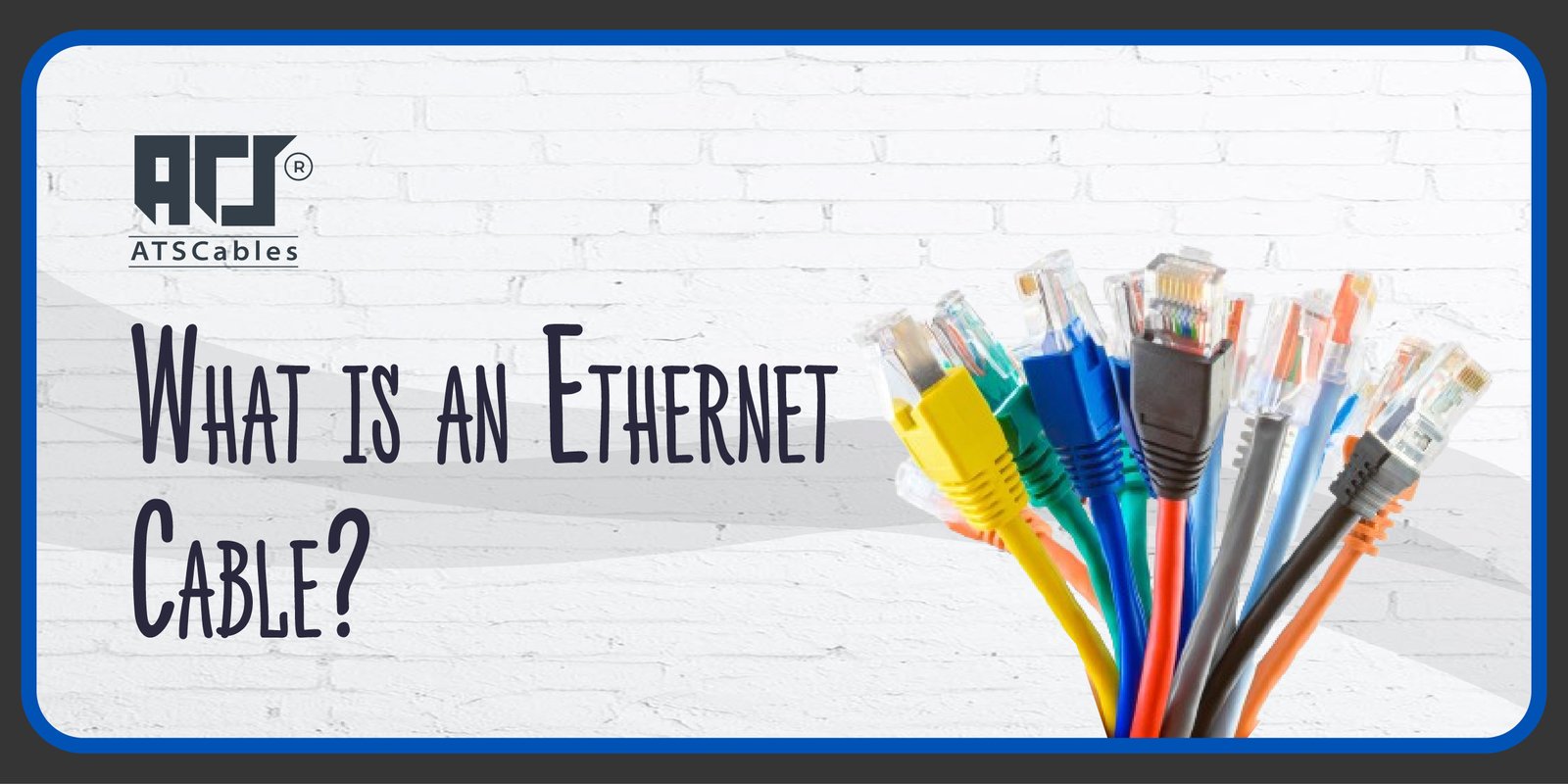
What is an Ethernet Cable?
If you’re looking to connect your computer or laptop to the internet without a wireless connection, then the ethernet cable is the go-to option. It ensures that you can get the best speed of internet when working on your laptop or computer. How does it do that you may ask?
Well, this robust networking technology will connect with your computer and laptop and let it connect to the local area network (LAN) for speedy data transmission through coaxial or fiber optic cables. This article will help you get a better idea of what is an ethernet cable used for.
Brief Overview of an Ethernet Cable?
An Ethernet cable is also called a network or LAN cable and it is like a digital highway connecting devices on a network. It’s a long, thin cable with a rectangular RJ45 connector on each end, kind of like a phone cable but with eight wires inside.
The cable transmits data between devices like computers, routers, and modems. Think of it as carrying information back and forth Different cable categories (Cat5e, Cat6) support different speeds (100Mbps, 1Gbps). Higher categories generally offer faster data transfer.
What Do Ethernet Cables Look Like?
As mentioned before, the LAN cable looks pretty much like the conventional phone cable. The only difference is that the ethernet cable has 8 wires rather than 4 that you find in the conventional phone cable. Furthermore, the connectors on the LAN cable are relatively bigger.
These connectors will connect to the ports of the computer, which are usually on the backside. Another crucial difference between LAN cables and traditional phone cables is that the latter only comes in gray.
On the other hand, there are different colors that you can find for the LAN cables. Additionally, the size of the connectors is relatively bigger on cable.
What Does an Ethernet Cable Do?
Many people think that going for a wireless connection is a better idea since cables can make the place look clumsy. However, they aren’t aware of the benefits that it offers. For instance, the best thing about networking cables is that it allows data transmission at a faster speed.
In addition, the cable also makes sure that the internet connection is stale. As a result, it can make the process of data transfer relatively quicker. The networking cable is also a good option to connect the smart TV for better performance. So, this provides you with the answer to the question: what is an ethernet cable used for on a TV?
Ethernet Cable Structure
Ethernet cables come with a bigger plug at the end of the cable. This is usually a Registered Jack 45 (RJ45) connector and it will go into the ports available on the backside of the router and the CPU of your computer.
Furthermore, you’ll see that the lever on the top of this networking cable is relatively smaller. As a result, it becomes easy to unclip the cable when removing it. The lever also ensures that the cable is securely connected to the device.
Types of Ethernet Cables
Ethernet cables come in different categories that you can choose from according to your needs. It entails Cat5, Cat5e, Cat6, Cat6a, Cat7, Cat8, etc. Each of these cables can handle varying network speeds and needs. Each type offers a range of data transfer rates, with Cat5e being common for home use at up to 1Gbps.
On the other hand, Cat6 provides faster speeds (up to 10Gbps) and better performance, while Cat6a is an upgraded version with better signal quality. Cat7 tackles applications that have a higher performance with longer cable runs.
The newest Cat8 boasts even higher bandwidth for demanding network environments. As you can see, each of these LAN cables is suitable for different requirements. Therefore, you can choose the one that meets your needs.
Limitations of Ethernet Cables
When we talk about what is an ethernet cable used for, we can see it has various use cases. However, there are some limitations of this cable that you need to be aware of as well, such as:
- Limited Distance – These cables are best suited for shorter network runs. Longer distances can lead to signal degradation and performance issues.
- Susceptibility to Crosstalk – Electrical interference from nearby cables can cause data corruption. As a result, it can impact the network stability.
- Unreliable Data Delivery – Without acknowledgment from receivers, it’s difficult to confirm successful data transmission. This can potentially lead to lost or incomplete information.
- Counterintuitive Traffic Impact – Increased network traffic can actually slow down data transfer on these cables.
- Troubleshooting Challenges – Isolating the source of problems within the network becomes more complex due to the lack of clear feedback mechanisms.
- Latency Issues – These networking cables may not be ideal for real-time applications or interactive tasks due to potential delays in data transmission.
Power Over Ethernet (Poe) and Its Role with Ethernet Cable
Power Over Ethernet (PoE) is a major player in the data transmission taking place through ethernet cables. It paves the path for easy transmission of electrical power alongside data over Ethernet cables.
Doing so ensures that there is no need for devices, such as VoIP phones, IP cameras, etc., to use different power outlets. Furthermore, PoE plays a major role in providing a seamless installation experience.
Why Use an Ethernet Cable?
Ethernet cables generally offer higher data transfer rates compared to Wi-Fi. This way, it allows you to enjoy a smoother and quicker experience on your computer.
They also boast lower latency, meaning less lag and improved responsiveness, crucial for real-time applications like gaming.
Above all, wired connections are typically more reliable and less prone to interference from other devices or walls compared to Wi-Fi. Ethernet connections can be more secure than wireless networks. This can potentially reduce the risk of unauthorized access to your data.
For Smart TVs that require internet access, an Ethernet cable can provide a more stable and faster connection compared to Wi-Fi.
FAQs
What is an Ethernet cable?
An Ethernet cable, also called a network cable, connects devices on a network like computers, routers, and modems to transfer data.
Can I damage an Ethernet cable?
Yes, excessive bending, pulling, or crushing can damage the internal wires and affect performance.
What are some signs of a bad Ethernet cable?
Slow internet speeds, dropped connections, or intermittent functionality could indicate a faulty cable.
keep connected
Get updates by subscribe our weekly newsletter

